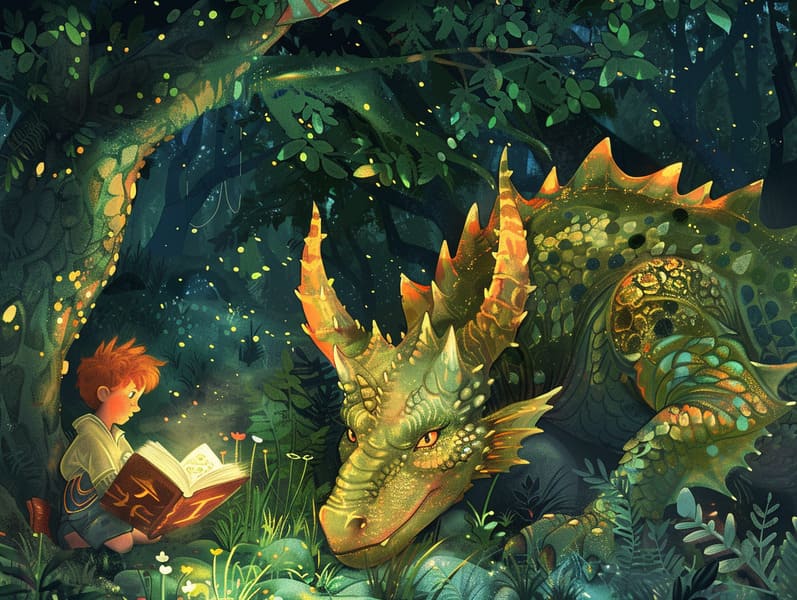
Children's fairy tales have ancient roots. These tales have been narrated from one generation to the next centuries before they were ever inscribed. They originated from a variety of cultures, including African traditions. They were initially passed along among mature audiences, often carrying themes and messages pertaining to the societal norms and beliefs of the time.
The renowned Brothers Grimm, Jacob and Wilhelm Grimm, were among the first to compile many of these beloved stories. Their volume, "Grimm's Folk Tales," included tales like "Cinderella," "Hansel and Grethel," and "Schneewittchen," which have since become classics in the world of iconic fairy tales. Similarly, the Danish author's whimsical stories, such as "The Mermaid," and "The Story of the Ugly Duckling," have gained the love worldwide, establishing their place in the pantheon of famous fairy tales.
Despite their historical roots, classic fairy tales remain as pertinent as ever, especially as children's night stories. These charming stories are now available in various formats, including beautifully illustrated books, captivating animations, and free fairy tales online.
Their unwavering allure can be linked to several delightful features:
Key Lessons: Traditional fairy tales often offer important moral lessons. Stories like "The Story of the Boy Who Cried Wolf" teach the significance of truth, while "The Story of the Tortoise and the Hare" exemplify the values of tenacity and modesty. These narratives offer kids clear distinctions between correct and incorrect, building their moral compass in a mild yet profound way.
Sympathy and Perception: Old fairy tales frequently showcase beings facing trials and tribulations, motivating readers to empathize with their struggles and root for their triumphs. For instance, "Beauty and the Beast" teaches us the virtue of looking beyond appearances to realize the inner core of a character, developing understanding and recognition.
Cultural Comprehension: Many ancient fairy tales are rich in the cultural contexts from which they arose. Engaging with these fairy tales can provide enlightening views into different ways of life, building a sense of global appreciation and perception.
Creativity and Imagination: The fantastical elements in traditional fairy tales—enchanted objects—spark children’s creative thoughts. These tales lead readers to extraordinary realms, generating fantasy dreams and a sense of magic that lasts a lifetime.
Old fairy tales are not only delightful but also illuminating. They function as alluring tools in developing various brain and heart skills in young readers. When timeless fairy tales are spoken out loud, they promote language acquisition by offering new terms and detailed sentence structures. This practice also fosters listening abilities and mindfulness, as little ones listen intently, ready to see what happens next.
Furthermore, conversing about the themes and characters of timeless fairy tales can strengthen thought processes and analytical skills. Kids are guided to spot patterns, make predictions, and realize cause and effect. These talks also assist little ones reveal their thoughts and feelings, strengthening their emotional intelligence.
In today’s online age, the abundance of digital fairy tales has made these stories more available than ever. Online resources and mobile apps share large libraries of Grimm's fairy tales that can be perused or heard anytime, anywhere. Fairy tales voiced are particularly common, making available an delightful method for young readers to be a part of more info these charming stories. Spoken stories and read-to-me videos guide characters and settings to life, often enhanced by bewitching musical scores and harmonies that heighten the tale journey.
The persistent attraction of traditional fairy tales lies in their ability to modify to present days while preserving their central messages. Contemporary takes of these narratives often introduce more varied figures and modern settings, making them pertinent to today’s audience. However, the basic principles of courage, understanding, and impartiality remain unchanged, continuing to influence audiences of all ages.
Fairy tales also offer a sense of protection and understanding. They disclose a neat narrative with a unmistakable beginning, middle, and end, often closing with the solving of conflicts and the triumph of truth over falsehood. This regularity can be solacing for the young, extending a sense of consistency in an inconstant world.
Traditional fairy tales continue to allure and enlighten new generations, maintaining their mystique and relevance in modern society. As kids' bedtime tales, they deliver a perfect blend of charm and enlightenment, supporting moral values, empathy, and creativity. The existence of internet fairy tales and the sought after status of fairy tales told out loud ensure that these old fairy tales remain acquirable to new generations.
By protecting and sharing these narratives, we continue to extol the rich tapestry of fables and cultural heritage. Whether you are browsing a vividly illustrated book, discovering a cyber collection, or listening via an read-aloud book, the elegance of ancient fairy tales is always within reach. These tales demonstrate of the perpetual essence of fairy tales and its ability to bind us across epochs and places.
No matter if you are perusing a vibrantly illustrated book, delving into a online collection, or listening on an audio story, the attraction of famous fairy tales is always within reach.
These narratives illustrate of the undying essence of fairy tales and its ability to hold us together across generations and cultures, making a tie that enchants and educates alike.